Palazzo Pitti is one of the largest buildings in Florence and a masterpiece of Renaissance architecture. It now houses an extensive museum complex, with prestigious and varied collections, as well as the Boboli Gardens.
Overview of the Palace and Museums
Built in 1457 for the Pitti family, it is attributed to Filippo Brunelleschi and executed by his student Luca Fancelli. The original building only included the current central block. In 1549, it was acquired by the Medici, becoming their grand ducal residence. From 1560, Bartolomeo Ammannati added the large courtyard and side wings, while the Lorraine family extended the façade onto the square. At the rear, the property opens onto the magnificent Boboli Gardens, designed from the mid-16th century.
Today, Palazzo Pitti forms a vast museum complex housing several prestigious collections. The first floor contains the Palatine Gallery, with its masterpieces from the 16th and 17th centuries, as well as the Royal Apartments. On the ground floor and the first floor is the Silver Museum, rich in precious objects that belonged to the Medici. On the top floor, the Gallery of Modern Art exhibits a large collection of 19th- and 20th-century paintings and sculptures. In the Casino del Cavaliere, perched within the Boboli Gardens, is the Porcelain Museum. Finally, the Palazzina della Meridiana hosts the Costume Gallery, dedicated to the history of fashion.
Highlights of Palazzo Pitti
- Palatine Gallery – with its richly decorated rooms and masterpieces by Raphael, Titian, Rubens, etc.
- Royal Apartments – former apartments of the Medici and Habsburg-Lorraine families.
- Gallery of Modern Art – offering a panorama of Italian painting from the 18th and 19th centuries.
- Silver Museum – treasures, jewelry, and precious objects of the Medici.
- Boboli Gardens – vast Italian-style park, a model for many European princely gardens.
- Porcelain Museum – located in the Casino del Cavaliere, with a refined collection.
6 more places and features to discover
- Costume and Fashion Gallery – extensive collection of historical and contemporary clothing.
- Palazzina della Meridiana – palace wing housing the fashion gallery and temporary exhibitions.
- Jewelry Room of the Lorraine dynasty – in the Silver Museum.
- Small grottoes and fountains scattered throughout the Boboli Gardens.
- Boboli Amphitheatre – monumental space for festivities and performances.
- Temporary exhibitions regularly organized in various wings of the palace.
Sections and Museums
Palatine Gallery and Royal Apartments
Occupying the left wing of the first floor, the Palatine Gallery preserves the former splendor of the Medici residences. Opened to the public in 1828 under the Lorraine family, it presents an exceptional collection of Renaissance and Baroque paintings. Highlights include works by Raphael, Titian, Correggio, Rubens, and Pietro da Cortona, displayed in a sumptuous setting combining painted ceilings and gilded decorations. The adjoining Royal Apartments exhibit rich 19th-century furniture, reflecting the grandeur of the grand ducal court.
Gallery of Modern Art
Located on the second floor, the Gallery of Modern Art offers an extensive collection of Italian paintings and sculptures from the late 18th century to the early 20th century. The elegant rooms, formerly inhabited by the Lorraine family, retain Neoclassical and Romantic décor. The collection notably highlights the Macchiaioli, pioneers of modern painting in Tuscany, as well as Italian artists of the Belle Époque.
Silver Museum
Former summer apartment of the grand dukes, the Silver Museum houses a remarkable collection of precious objects: silverware, cameos, vases, crystal, hardstone, tapestries, and clocks. Many originate from Florentine workshops associated with the Medici, but the collection also includes valuable foreign pieces. The rooms are decorated with 17th-century frescoes by Giovanni da San Giovanni, recounting the history of the dynasty.
Porcelain Museum
Established in 1973, the Porcelain Museum is located in the Casino del Cavaliere, on the heights of the Boboli Gardens. It primarily exhibits tableware used by the Medici, the Lorraine family, and the House of Savoy. The site, a former 18th-century pleasure pavilion, also offers panoramic views of the city and the Tuscan countryside.
Costume Gallery
The Costume Gallery, housed in the Palazzina della Meridiana, is the only Italian museum dedicated to the history of fashion. It preserves over 6,000 items, including dresses, accessories, theater costumes, and clothing from the 16th to the 20th century. Due to the size of the collections, they are regularly rotated to display different ensembles.
Boboli Gardens
The Boboli Gardens, created from 1549 for Cosimo I de’ Medici, are among the largest monumental parks in Florence. Designed by Niccolò Tribolo, then Ammannati, Buontalenti, and Alfonso Parigi the Younger, they are a masterpiece of Italian-style garden design. Visitors can explore the Buontalenti Grotto (1583), an amphitheatre adorned with an Egyptian obelisk, the Neptune Fountain, the Abundance statue by Giambologna, the Ocean Fountain, as well as several pavilions and belvederes. A space for both leisure and political representation, the gardens reflect the taste and power of the Medici.
Palazzo Pitti FAQ
How long should one plan to visit the palace?
For a complete visit of the museums and gardens, it is recommended to allow at least half a day, or a full day if one wishes to explore the collections in detail.
What are the must-see objects or artworks?
Not to be missed: Raphael and Titian masterpieces in the Palatine Gallery, the furniture and frescoes of the Royal Apartments, the Medici silver collection, the sculptures and fountains in the Boboli Gardens, and the porcelain collection in the Casino del Cavaliere.
Is the palace accessible to people with reduced mobility?
Yes, most museums are accessible, but some historic areas, such as the Casino del Cavaliere and certain parts of the Boboli Gardens, may present access difficulties. It is advised to check at the entrance for adapted routes.
Practical Information, Visits, Hours, and Links
Tickets and Guided Tours
Hours and Tickets
- Address: Piazza Pitti, Florence
- Opening hours: generally from 8:15 a.m. to 6:50 p.m. (Tuesday to Sunday). Closed on Mondays, January 1, May 1, and December 25. Access to the different museums may vary by season (some sections close earlier in winter).
- Tickets: full price approx. €8.50 (for each museum), reduced approx. €4.25. Combined tickets are available to visit several museums in the complex (Palatine Gallery, Gallery of Modern Art, Silver Museum, Costume Gallery, Porcelain Museum, Boboli Gardens).
- Tip: allow at least half a day to fully enjoy the palace and its collections.
Links and Sources
- Palazzo Pitti – Official Website (Uffizi Galleries): Complete information on collections, hours, tickets, and news about the museum.
- Palazzo Pitti – Wikipedia (French): Detailed article on the history, architecture, and collections of the palace.
In the Florence Museums Category
- Museums in Florence
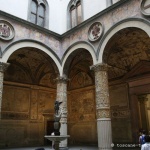 Florence, cradle of the Renaissance, is a true capital of art and culture in Italy. Its museums house some of the most famous masterpieces in the world, ranging from medieval ...
Florence, cradle of the Renaissance, is a true capital of art and culture in Italy. Its museums house some of the most famous masterpieces in the world, ranging from medieval ... - Uffizi Gallery
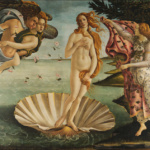 La Uffizi Gallery in Florence is one of the most famous museums in the world, housing an exceptional collection of Italian Renaissance masterpieces. Upon entering, you will discover iconic paintings ...
La Uffizi Gallery in Florence is one of the most famous museums in the world, housing an exceptional collection of Italian Renaissance masterpieces. Upon entering, you will discover iconic paintings ... - Gallery of the Academy of Florence
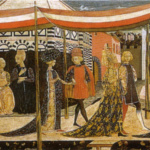 The Gallery of the Academy (Galleria dell’Accademia in Italian) is one of the most visited museums in Florence and an essential stop to admire Michelangelo’s ultimate masterpiece: the David. However, the ...
The Gallery of the Academy (Galleria dell’Accademia in Italian) is one of the most visited museums in Florence and an essential stop to admire Michelangelo’s ultimate masterpiece: the David. However, the ... - National Archaeological Museum of Florence
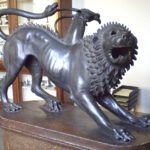 Located in the Palazzo della Crocetta, the National Archaeological Museum of Florence is one of the most important museums in Italy. It houses a vast collection of Etruscan, Roman, Greek, ...
Located in the Palazzo della Crocetta, the National Archaeological Museum of Florence is one of the most important museums in Italy. It houses a vast collection of Etruscan, Roman, Greek, ... - Bargello
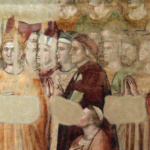 The Bargello Museum is located in the historic center of Florence, at the heart of the imposing Palazzo del Bargello.Since 1859, it has been the first national museum of unified ...
The Bargello Museum is located in the historic center of Florence, at the heart of the imposing Palazzo del Bargello.Since 1859, it has been the first national museum of unified ... - Museum of Palazzo Vecchio
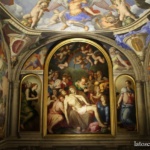 Palazzo Vecchio is a historic palace and museum. The interior rooms present frescoes and decorations made by artists like Vasari, which illustrate the history and power of Florence. The museum ...
Palazzo Vecchio is a historic palace and museum. The interior rooms present frescoes and decorations made by artists like Vasari, which illustrate the history and power of Florence. The museum ...


No Comments Yet